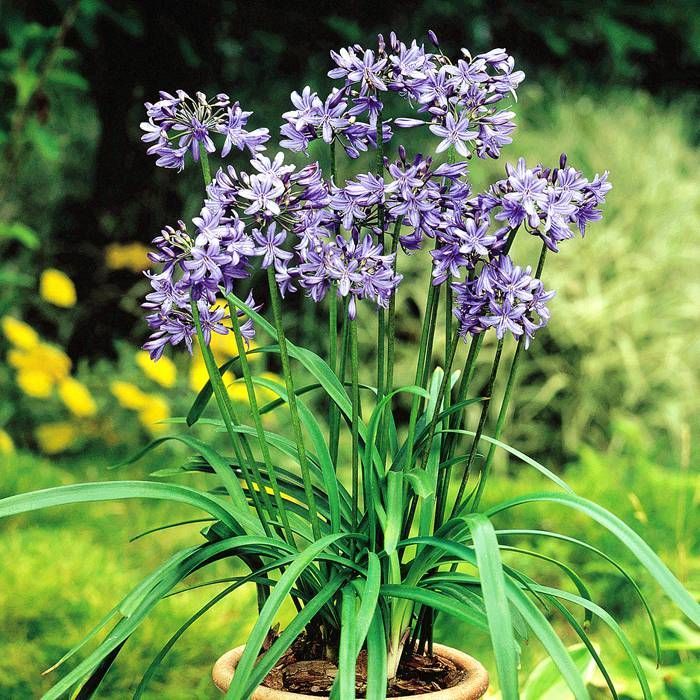Just how to Plant and Maintain Agapanthus in Your Yard
Just how to Plant and Maintain Agapanthus in Your Yard
Blog Article
Understanding the Art of Agapanthus Treatment: Essential Steps for Healthy And Balanced Development and Lively Blooms
In the realm of horticulture, the growing of agapanthus stands as a satisfying undertaking for those who look for to nurture these stylish blooming plants. From picking the best variety to grasping trimming techniques, the journey towards growing flourishing agapanthus plants is diverse and holds the essential to unlocking the complete potential of these organic gems.

Picking the Right Agapanthus Selection

When picking the right Agapanthus selection for your yard, consider factors such as climate viability, bloom shade, and growth habit. Furthermore, think about the environment in your region to ensure the Agapanthus selection you choose can grow in your particular problems. Recognizing the development routine of different Agapanthus selections is critical for correct positioning within your garden.
Ideal Planting Conditions
Considering the optimal ecological needs is necessary for successful Agapanthus cultivation. Agapanthus plants are delicate to cold temperature levels and must be protected from frost throughout wintertime months.
To guarantee healthy and balanced development and vibrant blooms, plant Agapanthus light bulbs at a deepness of regarding 2-4 inches and area them 8-12 inches apart. Adding natural issue, such as garden compost, to the soil can enhance water drainage and fertility, advertising durable origin growth. Mulching around the base of the plants helps maintain moisture and suppresses weed development. Normal watering is important, specifically throughout the growing season, to keep the soil consistently moist yet not saturated.
Watering and Feeding Tips
Preserving proper wetness levels and giving crucial nutrients are vital components in the treatment regimen for Agapanthus plants. When it comes to sprinkling Agapanthus, it is crucial to strike a balance. These plants like consistently wet dirt but are at risk to root rot if overwatered.
Fertilizing Agapanthus is crucial for promoting healthy development and respected blooms. Use a balanced fertilizer, such as a 10-10-10 formula, in the early spring as brand-new growth emerges. By adhering to these watering and feeding pointers, you can guarantee your Agapanthus plants prosper and create dynamic, durable flowers.
Pruning Techniques for Agapanthus
Pruning Agapanthus plants at the ideal times and with correct methods is vital for preserving their health and promoting optimal development and blooming. The excellent time to trim Agapanthus remains in late winter months or very early springtime prior to new development emerges. Begin by removing any kind of yellowing or dead fallen leaves near the base of the plant. Cut them as close to the ground as possible without harming the emerging shoots.
For flowered stems, wait till the blooms have actually withered and afterwards cut them back to the base. This not just cleans up the plant's look however likewise motivates the development of brand-new blossom buds. Deadheading spent blossoms can additionally reroute the plant's power into generating even more flowers instead of setting seeds. However, if you intend to accumulate seeds for breeding, leave some flowers to mature and dry on the plant.
Keep in mind to utilize tidy, sharp tools to make exact cuts and decrease the risk of introducing illness. Agapanthus. Normal pruning will certainly help maintain your Agapanthus looking healthy and balanced and neat while making sure a bountiful screen of attractive blooms
Taking Care Of Usual Parasites and Conditions
After making certain proper pruning strategies for Agapanthus, it is necessary to resolve typical parasites and diseases that see here now can affect the health and vitality of these plants. Agapanthus plants are usually hardy but can still fall target to specific problems. One typical bug that impacts Agapanthus is the Agapanthus gall midge. This tiny, orange fly lays its eggs in the foliage, causing altered growth and flower buds that fail to open up. To fight this pest, prune and ruin any afflicted this link plant parts and think about using insecticidal soap.
Another typical issue is fungal fallen leave spot, which provides as dark sores on the fallen leaves. To stop fungal conditions, ensure good air circulation around the plants, prevent above watering, and get rid of any kind of contaminated fallen leaves quickly. In addition, Agapanthus plants can endure from root rot if they are grown in inadequately draining dirt. To stop this, plant Agapanthus in well-draining soil and stay clear of overwatering. By being alert and taking prompt activity against illness and parasites, you can assist your Agapanthus plants flourish and create vivid blooms.

Conclusion
Finally, mastering the art of agapanthus treatment involves choosing the appropriate range, providing ideal growing problems, correct watering and feeding, appropriate trimming strategies, and addressing typical bugs and conditions. By following these essential steps, you can make certain healthy and balanced development and vivid flowers for your agapanthus plants. Remember to frequently monitor and preserve your plants to promote their total health and durability.
To make sure healthy and balanced growth and vivid flowers, plant Agapanthus light bulbs at a depth of concerning 2-4 inches and area them 8-12 inches apart. By adhering to these watering and fertilizing pointers, you can ensure from this source your Agapanthus plants flourish and produce vivid, durable blooms.
One common parasite that affects Agapanthus is the Agapanthus gall midge. Additionally, Agapanthus plants can experience from origin rot if they are planted in badly draining dirt. By adhering to these necessary steps, you can ensure healthy and balanced growth and lively blooms for your agapanthus plants.
Report this page